You are using an out of date browser. It may not display this or other websites correctly.
You should upgrade or use an alternative browser.
You should upgrade or use an alternative browser.
Dragonflies and Damselflies
- Thread starter AlanF
- Start date
Those three small dots / lenses are the so called "simple eyes" or "ocelli", typical for (allmost) all insects.Cool stuff
I wonder what the small pearl-looking objects next to the nose are. And there is something looking like a single optical lens centered in the nose...
...
More details see here.
Upvote
0
Beautiful and informative shots Pieter! Please post more.View attachment 180338
Dew-covered Meadowhawk
View attachment 180339
Emperor Dragonfly laying eggs.
I'll stop now - sorry for taking up all this space! I did a little book on dragonfly photography a few years ago - hence my enthusiasm ;-)
Used a 40D, 5D III, or 7D II, with the 100 f2.8 macro or the 300mm f/4L.
Upvote
0
So interesting.View attachment 180337
Immature Black Meadowhawk - the wings are not yet fully transparent
Upvote
0
Very interesting reading, thanks for the link. I still suspect that the silvery surface on the outer ocelli is an attempt to keep visible (for humans) light out of the sensor, making it more sensitive to UV, IR or possibly thermal radiation... But the theory that the ocelli is used for attitude control seems reasonable. And maybe the center ocellus at the Ruddy Darter is optimised for low-light conditions considering its relatively large size. ""Second-order neurons in the dragonfly median ocellus respond more strongly to upwards-moving bars and gratings than to downwards-moving bars and gratings, but this effect is only present when ultraviolet light is used in the stimulus "" That makes sense for pilots, it is usually a more acute problem if you are heading down toward the ground than if you are climbing upwardsThose three small dots / lenses are the so called "simple eyes" or "ocelli", typical for (allmost) all insects.
More details see here.
Thanks for the feedback, Click, Alan, Berowne and Bluediablo
Emerald damselfly / common spreadwing.. click twice to enlarge to 100%
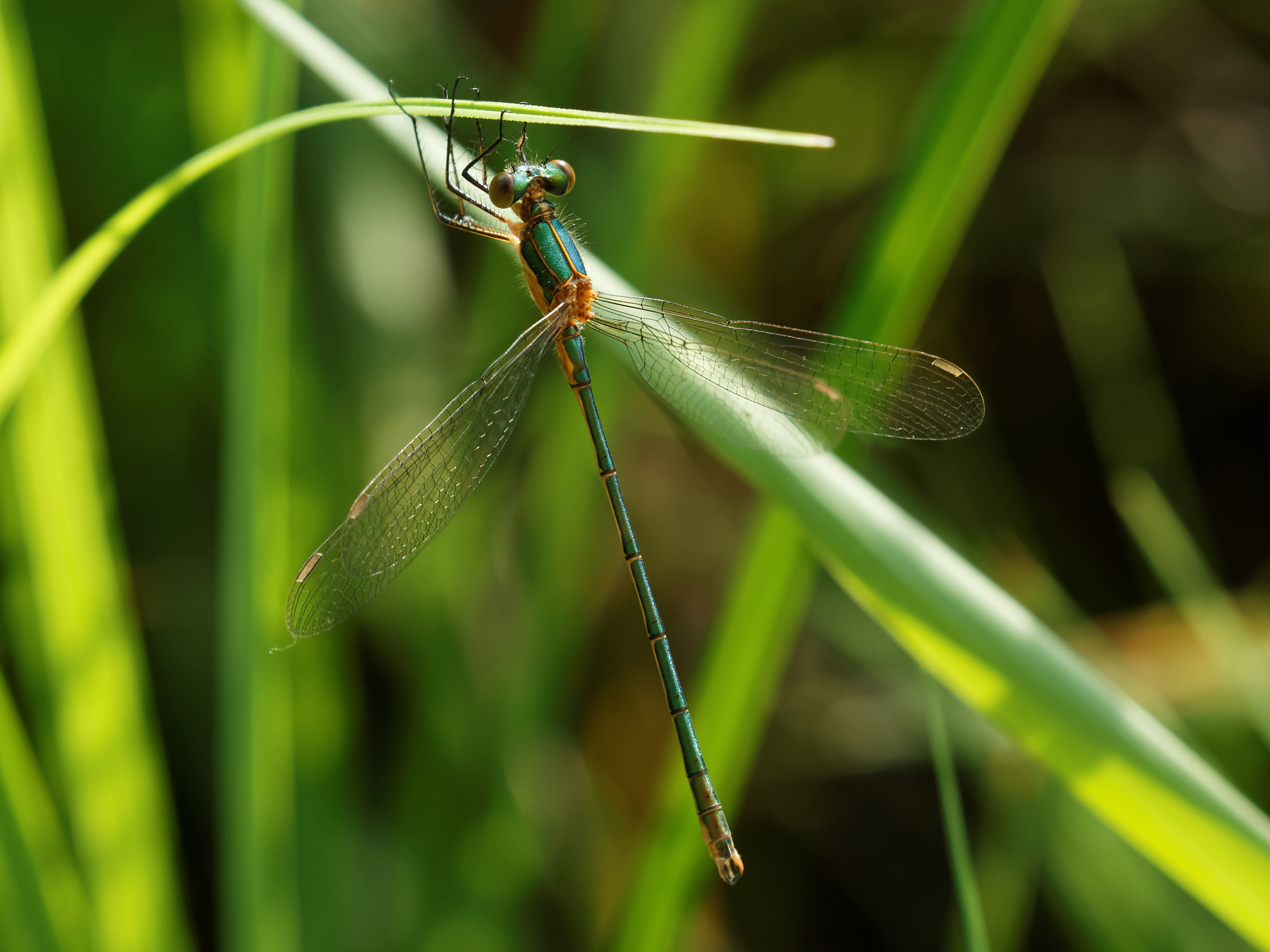 F36A6392_DxO_r2880 by Erik Astrom, on Flickr
F36A6392_DxO_r2880 by Erik Astrom, on Flickr
Last edited:
Upvote
0
Beautiful images all... Here's a couple of mine. I'm not sure of the Latin name for this particular "model". These are from 2013, my 40D with a 70-200mm f2.8L IS. In the second image, I was as close as my lens would allow me (approx. 6') at f2.8 and belatedly realised the focus nailed the wings but the head is not in focus... feel free to double-click to view full-screen.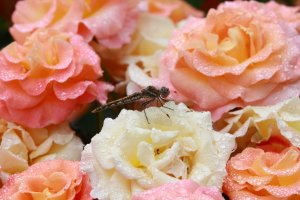
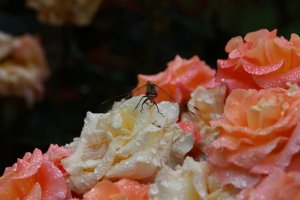


Upvote
0
So with my earlier images I tried to use dual pixel raw micro adjustment to sharpen focus on the eyes of my subjects. I did not find any difference to speak of in this attempt to dual pixel raw sharpen/ stack.
Have any of you tried the dual pixel raw adjustments and do they work for you?Attached image is the one I tried with but no difference as far as I can tell thus no pre and post images. Quite cropped and enlarged to 300% as seen here. Or is this even the situation that DPRAW is designed for?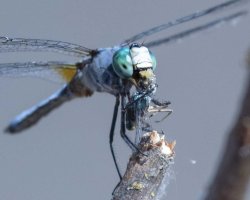
Have any of you tried the dual pixel raw adjustments and do they work for you?Attached image is the one I tried with but no difference as far as I can tell thus no pre and post images. Quite cropped and enlarged to 300% as seen here. Or is this even the situation that DPRAW is designed for?

Upvote
0
Beautiful and informative shots Pieter! Please post more.
OK thanks very much Alan - I don't need a lot of encouragement! ;-)
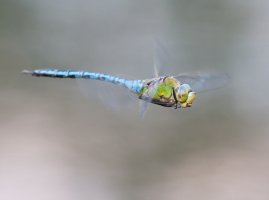
Green Darner. All my in-flight shots are "full manual" - focus, exposure, aperture, and of course hand-held. I find the 300 f4 L with the Canon 5D III provides an almost ideal field of view, and the large focusing ring really helps.
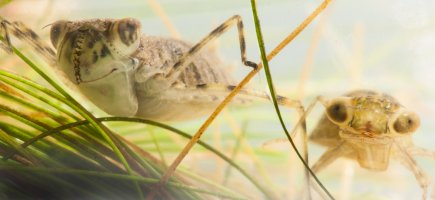
Nymphs of the Skimmer family (left) and the Darner family (right), under water. Shot with a tripod, through glass after putting them in a little aquarium , using a hand-held flash to provide lighting from the side.
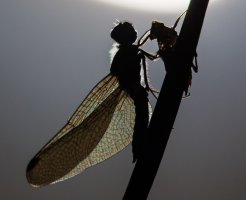
Just-emerged Meadowhawk, backlit by the full moon (no other lighting). Most dragonfly species emerge at night.
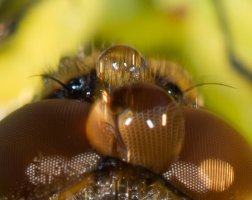
Dew drops magnifying eye facets and some hairs.
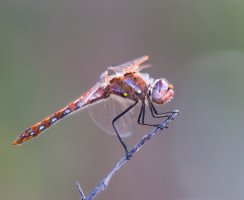
Male Variegated Meadowhawk - one of the most interestingly-patterned common dragonflies.
Last edited:
Upvote
0
I love these - particularly the first one, with the swirly background!Birds have become so scarce this time of year and the heat keeps them hidden in the thick foliage, so what does a bird photographer do? Well, I have suddenly become hooked on dragonflies and damselflies. Portraits can be fun and you can sneak up on them easily. And it's perfect for the opportunistic photographer with lightweight gear, and you don't need very long telephotos. Dragonflies in flight are something different - they can be really difficult to track and focus on. I thought I could never capture them but the 100-400mm II on a 5DIV or 5DSR has proven to be brilliant. So, I am starting a new thread just devoted to dragonflies and damselflies. I'll start with a couple of Banded Demoiselles in flight. They are tiny and fly very erratically. I must admit I didn't even know their name or that they even existed a week ago. But, I am now addicted.View attachment 179469View attachment 179470
Upvote
0
Pieter your images are outstanding.
The night shot and the underwater ones are outstanding ( in their pond?).
The nymphs have mouths that look like frog mouths. I understand that they are fierce predators in that life phase.
The night shot and the underwater ones are outstanding ( in their pond?).
The nymphs have mouths that look like frog mouths. I understand that they are fierce predators in that life phase.
Upvote
0
How do you manage to do that..? My own experience is that tracking and manual focusing on fast moving targets causes 120% (or maybe a bit more) workload. All my in-flight shots are "full manual" - focus, exposure, aperture, and of course hand-held.
[url=https://flic.kr/p/21v6qYR]
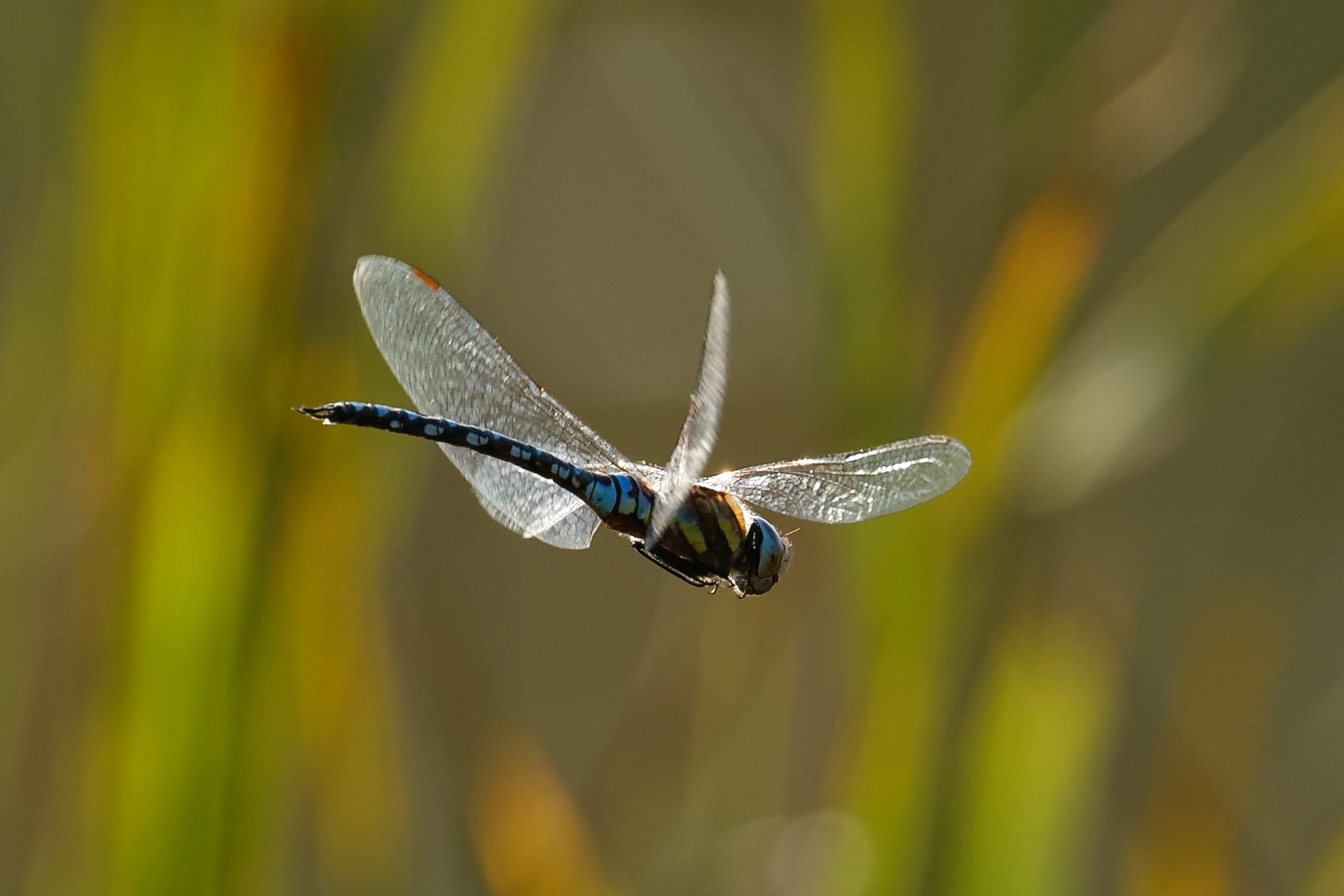 F36A9246_DxO_full by Erik Astrom, on Flickr[/URL]
F36A9246_DxO_full by Erik Astrom, on Flickr[/URL]
Upvote
0
When I'm not fast enough, I only get the tail
I agree with you. Sometime you're not fast enough and only get the tail...

Just kidding, of course
Last edited:
Upvote
0
I agree with you. Sometime you're not fast enough and only get the tail...
View attachment 180407
Just kidding, of course
Upvote
0
How do you manage to do that..? My own experience is that tracking and manual focusing on fast moving targets causes 120% (or maybe a bit more) workloadWhen I'm not fast enough, I only get the tail
I find that it's possible to anticipate the right moment, following the dragonfly through the lens and slowly moving the focus ring at the same time. Then there will be a few moments when it is in focus. I don't keep the button pressed - after 5-10 continuous shots the dragonfly is often gone / way out of focus, and I find I get more keepers when I take individual shots 0.5 - 1 second apart while continuously tracking and manually adjusting focus. It also depends a lot on the individual dragonfly: even within a species, some will fly slower, hover more often, and/or fly in a more predictable pattern than others. I tend to stick with a single specimen for a long time, waiting for it to return after it passed by (they usually have pretty fixed patrol patterns). Having said that, you're right about the workload! I would say about 1 in a few 100 is a keeper - and that's before throwing out images with busy backgrounds, uninteresting lighting, wings in weird positions, etc. Yours is a lovely shot, even if it's from a slight angle. Here are a few more of mine.
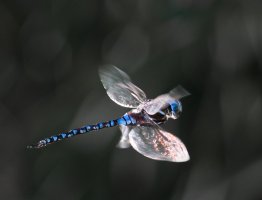
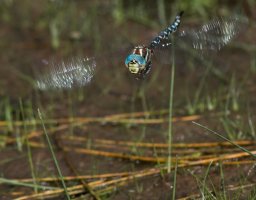
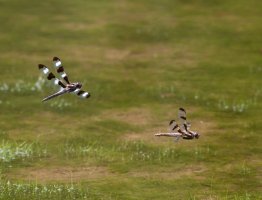
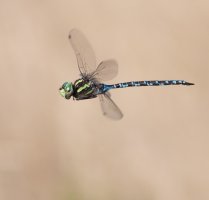
Last edited:
Upvote
0
Similar threads
- Replies
- 23
- Views
- 12K
- Replies
- 6
- Views
- 15K
- Replies
- 48
- Views
- 12K
